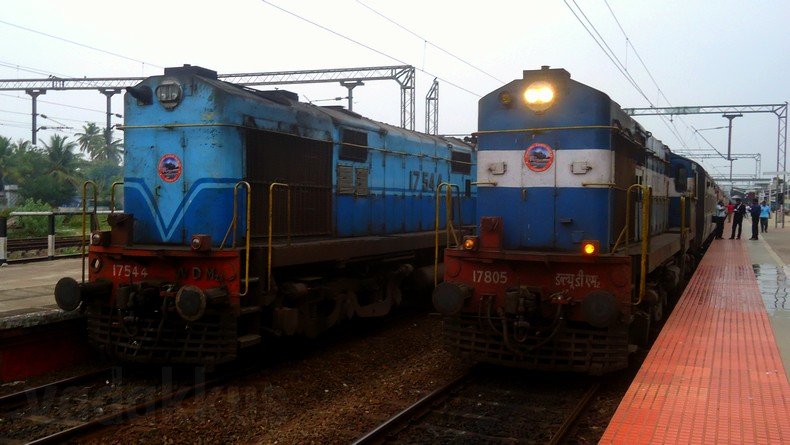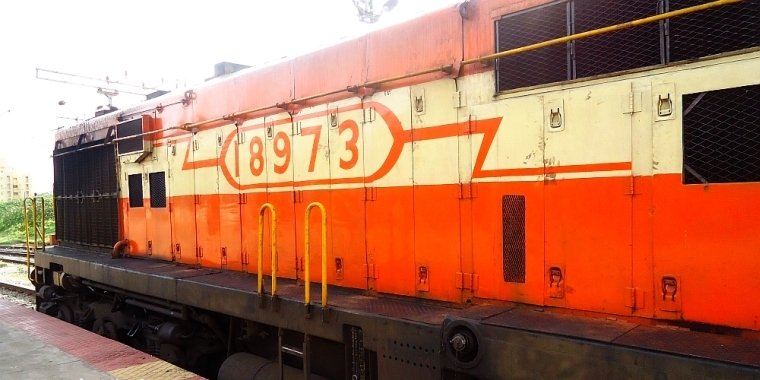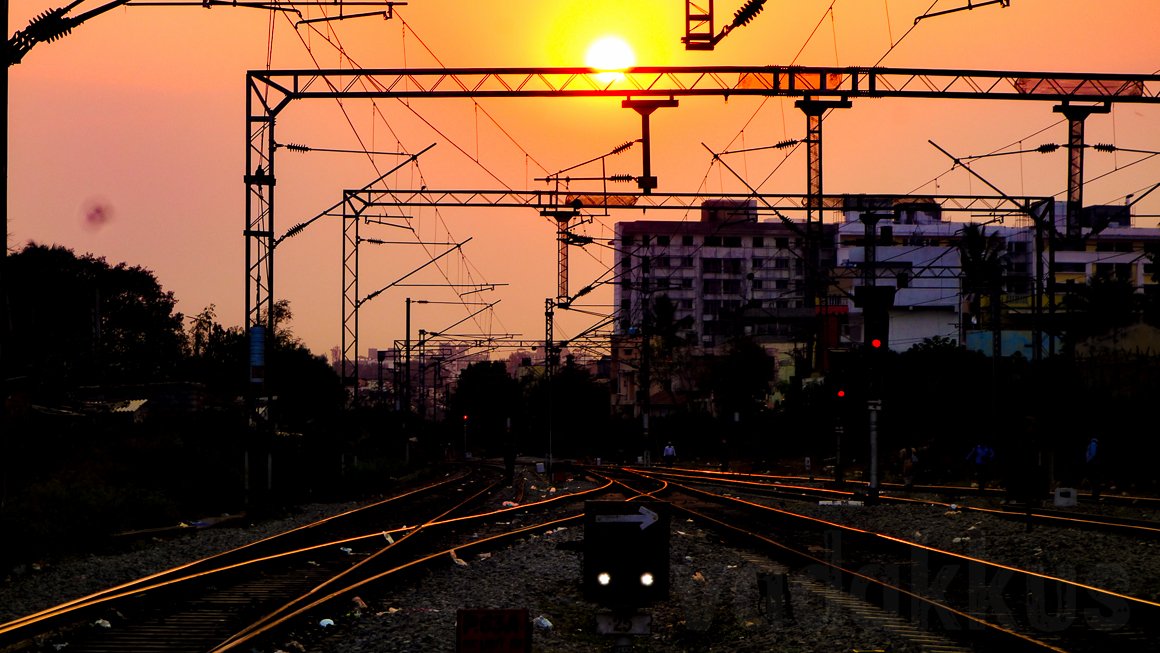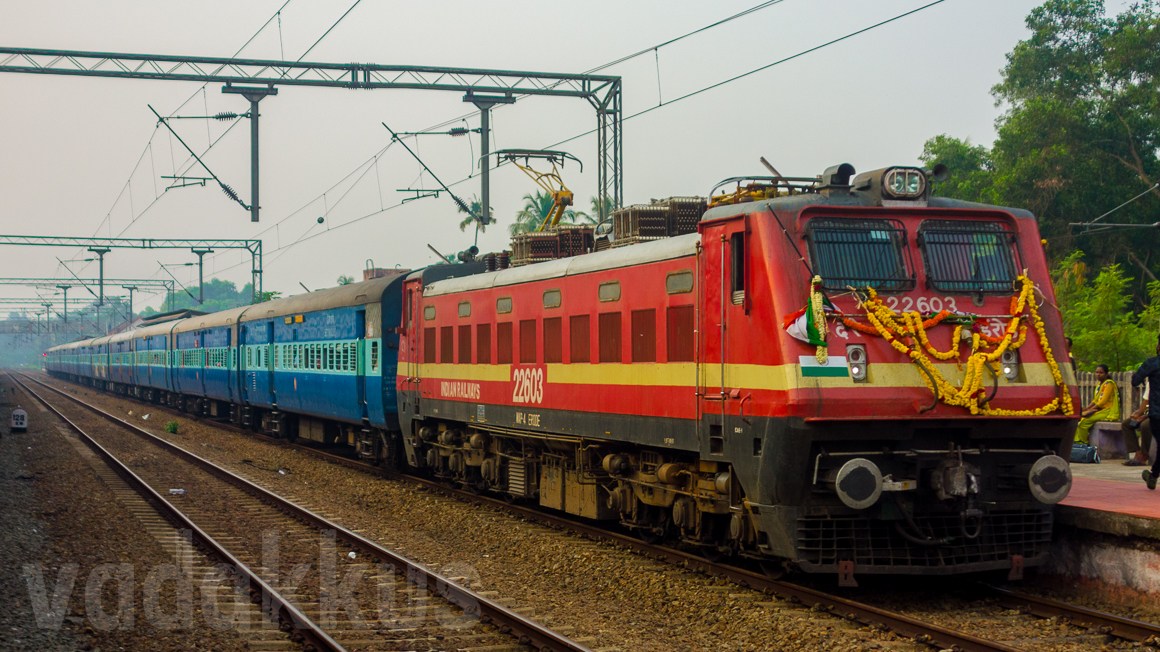Why weren’t any new trains announced in the 2015-16 Railway Budget?

No new trains were announced in the Railway Budget of 2016-17 also, for reasons the same as what is given in the post below. Railway budgets should stop being goodies distribution initiatives.
The Indian Railway Budget 2015-16 presented by the Hon. Railway Minister Shri Suresh Prabhu was historical and groundbreaking in more ways than one. It was not just a budget but also a planning vision document, outlining a plan and process for the Indian Railways for once again become the backbone of our economy and to provide world-class (at par to any leading railway network in the World) to Indian citizens, rather than announcing big ticket projects and dreams which will never take off. However, the biggest shock Mr. Suresh Prabhu delivered was the absence of the usual laundry list of new trains, extensions, frequency increases, and new line projects.
At present, due to over-utilised line capacity and backlog in track renewals, there are speed restrictions, which lead to delay in running more number of trains. The review will be completed soon so that we can announce new trains and increased frequency in this session. – Suresh Prabhu, Railway Minister
Though the minister said new trains will be announced in this session itself, the number will be substantially less than previous years. Many have asked me: “Why were there no new trains announced in the budget?” “There is simply no space to run new trains”, will go my reply. Just like they buys cars and then complain about “all those cars” creating traffic jams, the general clueless public people have no idea about how trains are run and the railways work. Everyone wants new trains from everywhere to everywhere else but will not pause to understand how the entire thing works before putting their selfishness on display.
Citizens who demand better railway services are often not aware of the constraints that the Railways operate under. – Suresh Prabhu, Railway Minister
The situation (avastha) of Indian Railways can be compared to that of the roads in Indian cities. All cities in India are pure traffic hell with vehicles jamming all roads in all directions as far as the eye can see, no matter how wide they are. Vehicles crawl along as 10 km commutes take two hours and people lose time, energy and life fighting traffic jams. There can be any number of reasons can be cited for this, but the most basic reason is simple:
Too many vehicles and too less road.
There simply are not enough roads to accommodate all these vehicles we see. Our roads and cities all built before India’s “vehicle boom” were never designed to handle these kind of traffic volumes. Vehicles have increased 500% in India in the last few years as more and more people were able to afford their “own vehicle”. But the number of roads have not increased. And hence the mess we see. Drawing parallels, Indian Railways face exactly the same problem as that of its roadway counterparts.
Too much train and too less track.
Over the past couple of decades the railway budget has been less of a budget and more of a goodies delivery vehicle. New trains were announced as populist doles and for “prestige” without any rhyme or reason or revenue justification whatsoever. It is estimated that in the past 25 years, around 2000 new non-EMU trains were introduced on the Indian Railways network while during the same period the total track kilometers grew only by around 7000 km (route track: 3000 km). Our network is so congested today that per every running track km that exists, a train runs on an average 63 km a day! Simply put, there is no track left to run trains. Yes, even if the line is double-track. Most of our tracks are over utilized which not just puts strain on running trains but is also dangerous.
492 section of IR -running at a capacity of more than 100%; 228 running between 80-100% #RailBudget2015 Catch it live http://t.co/o9DL8DZ4hz
— Ministry of Railways (@RailMinIndia) February 26, 2015
Running trains involve a lot of controlling and monitoring bound by a litany of rules, regulations and other factors. Drivers (loco pilots) cannot just “run” trains like you drive your Alto on NH47. Breaking a speed limit or jumping a signal can result in horrible accidents and even if not, termination from service is all but sure. All train running is decided by controllers who actually remotely set the signals. And too many trains on our tracks running close to each other often results in some drastic controlling measures to make atleast some trains run on time.
Trivandrum Division’s Bermuda Triangle
To put this in perspective, let us take a scenario that played out on Friday February 27 2015. This scenario explains why there are no new trains being announced and also explains why trains in India run late.
That evening from Trivandrum the 12258 YPR Garib Rath departed at 1700, 16317 Himsagar at 1709, 12696 Chennai Superfast at 1720, 16432 Intercity at 1730, 16304 Vanchinad at 1740, (Kollam Passenger at 1750), 16629 Malabar at 1830 and 12431 Rajdhani at 1915 towards Ernakulam. The Himsagar was late by an hour plus at Trivandrum and followed the Garib Rath till Chingavanam where it overtook it. Meanwhile, the 12696 Chennai SF trailed behind these. The three trains were all an hour+ late thanks to speed restrictions on overutilized tracks and crossings on 67 km of single line in between. The three trains were now running back to back on the Kottayam – Ernakulam section 10 to 15 min apart and an hour late before reaching Ernakulam.
Now here is where it gets interesting. Himsagar left Ernakulam Town ERN at 2155. But before the Garib Rath which was following it could reach ERN, the 16342 Intercity (via the parallel Alappuzha line) left Ernakulam Jn ERS at 2202. Then it was sided at Kalamasserry (after ERN) and the Garib Rath which left ERN at 2217 overtook it. In between this, the 16188 Tea Garden Express which leaves ERS at 2205 left 25 min late that day due to a loco problem, and by that time the Chennai SF also was reaching Ernakulam. The Tea Garden was then held at the point where the KTYM line joins the ALLP line allowing the Superfast to pass and was allowed to move only after the SF had left ERN at 2248. While all this was happening, the Rajdhani had arrived at Ernakulam Jn. So, at around after 2250, this was the situation, roughly: Himsagar had passed Chalakudy CKI, Garib Rath was nearing Angamaly AFK, Intercity was at Aluva AWY, Superfast was nearing Idapalli IPL, Tea Garden was at Ernakulam Town ERN and the Rajdhani was leaving Ernakulam Jn ERS. The Rajdhani then would overtake the Tea Garden stuck at ERN, the Superfast would trail the Intercity all the way till Thrissur with the Rajdhani crawling behind it, while the Himsagar and Garib Rath ran away in front. And more funnily, the Garib Rath would later re-overtake the Himsagar at Erode.
16317 at CKI, 12258 at AFK, 16342 at AWY, 12696 at IPL, 16188 at ERN, 12431 at ERS. Very Nice. << at 2258 on 27/2.
— vadakkus (@vadakkus) March 2, 2015
And all this circus obviously contributes a lot into trains getting late. At 2250 there were 6 trains within 45 km, or a train every 7.5 km between ERN and CKI! The above scenario plays out in most busy sections in the country. The busiest, the Kanpur-Allahabad-Mughalsarai section is possibly 10 times as congested, which is why trains in that section run late by hours all the time. Adding more trains into this mess will only turn all our tracks into Silk Board junctions with trains stuck everywhere and running many, many hours late. Can you imagine adding more trains into this mess? Would you rather have new trains that do not run or existing trains running (somewhat) on time?
Some Questions on How Trains are Run in India
However, one could ask: the Ernakulam-Thrissur line above is a fully electrified double line (FEDL). Why would trains run late on a double line? There is no need to stop for crossings! They have to just run, right? Wrong. Double lines only eliminate time loss caused by crossings, and not by variable speeds. Between Ernakulam and Thrissur, Himsagar and Garib Rath have one stop each, the Intercity has four and Tea Garden five while the Superfast and Rajdhani have no stops. So what will happen to the SF with no stops following the Intercity which has four? It gets stuck behind, getting more and more delayed. This is how our overcrowded tracks make our trains run late. Just like your 200-bhp 220-kph capable Mercedes gets stuck behind a truck crawling at 35 kph on Old Madras Road, trains with varying speeds and halt patterns running on the same tracks cause the Rajdhani crawl behind a passenger or freight, thereby delaying it. Our trains aren’t slow. It is our tracks that are slow, creating slow timetables.

But why can’t slow trains be overtaken at a station? Why can’t trains be run closer together or more continuously, like every 15 minutes?
Trains cannot be run bumper to bumper (or, buffer to buffer, looking at it that way) because of safety and signaling reasons. Railway lines are divided into Block Sections varying between 1 km to 20 km in length. Only one train will be allowed to be present in one block section at any given time for obvious reasons. So trains have to be run with sufficient distance between them for this account. And when a train is overtaken, it has to wait until the overtaking train clears the block before starting, costing it around 15-20 minutes. If the Intercity were made to wait for the Super and Rajdhani to overtake it, it would become atleast 35-40 min late with no substantial gains for the previous two. On running trains every 15 minutes, railway tracks are steel and not Unobtainium and will fail if they are utilized too much. Heavy usage will cause more wear and tear and weak tracks resulting in high maintenance necessitating speed restrictions, creating crawling trains which defeat the purpose. In our scenario above, none of those trains were running on their assigned time table or slots, all were late between 30 to 90 minutes, leading to improvisation in controlling. In cases like that of Mumbai where trains actually run neck-to-neck, sophisticated signalling systems need to be installed for which sadly our railways do not have enough money for. And in Mumbai, rail tracks have to be replaced every three months!
Fine. So why can’t be there separate tracks for fast and slow trains? Like in Mumbai?
Fantastic! Now you are thinking like our railway minister. Yes, the only way more trains can be introduced into the Indian Railways system is by increasing line capacity. If there were four tracks on the above Ernakulam – Thrissur line, the Intercity could run on one while the SF and Rajdhani ran on the other, possible overtakes happening without disruptions. What we should first do is increase the capacity of our lines by adding more tracks before running more trains on them! This is why #RailBudget2015 gives precedence to doubling, tripling and quadrupling of existing railway lines before new trains are introduced, sanctioning around one lakh crore to this purpose. Finally we have someone who understands what is required and acts accordingly!
Shorter blocks, bypass lines, doubling/tripling/quadrupling for de-bottlenecking congested lines! #RailBudget2015
— Indian Railway Facts (@IRfacts) February 26, 2015
In the next five years, our priority will be to significantly improve capacity on the existing high-density networks. ….. The emphasis will be on gauge conversion, doubling, tripling and electrification. Average speed will increase. Trains will become more punctual. – Suresh Prabhu, Railway Minister
RM @sureshpprabhu gets his cards right. Capacity augmentation, decongestion, modernization, safety, digitization. Not goodies distribution.
— Indian Railway Facts (@IRfacts) February 26, 2015
Every time a proposes a new train to be started to meet their own ends, zonal railway officials put their hands on their heads thinking “where I am going to find the slot/time/coaches/locomotives to run this?” Not only should be random weekly trains between random towns be discouraged, loss-making trains should be discontinued altogether, like this one, this, this, this, this, this, this, this, this and this, all white elephants of the Indian Railways. As far as I am concerned, the Railway Budget should completely cease to be a new-train-announcement exercise. Zones should be empowered to announce trains as per demand, feasibility and profitability. Does KSRTC wait for the state budget before announcing new bus schedules? Does Vodafone wait for Annual General Body meetings before announcing new tariff plans? If no, why should the Railways? It is high time we have a proper, corporatized outlook on how to run train operations, and not populist policies. We have to build up our foundation to be strong, to improve quality over quantity, capacity over cacophony. It is not the Railways’ duty to run water bottling plant and Medical Colleges. Let us focus on creating a new Indian Railways. And for that, new trains can wait.





Speaking of which I wondered why Ratlam-Mhow-Khandwa gauge conversion was delayed for so long when it could offer an alternate north-south link and decongest other mainlines.
We find that not only are there too many trains, but also too many long-distance trains on the same track length. The NDLS-PNBE stretch is a particularly miserable 1000 km of track, where delays are often frequent, and even a premium, three-stop train like the Sampoorna Kranti, isn’t spared delays- in fact, that one is delayed by over 10 hours often. As each long-distance train is delayed at a section, with more such sectional delays, the cumulative delay is massive, and that, in turn, delays trains that follow it in each stretch, piling up delays along that stretch.
Trans-national trains complicate matters further. Any distance over 2000 km is simply not feasible as a train journey, unless the train can run sufficiently fast and cover the distance in 16-18 hours. Yet, we have trains that cover extremely long distances, be it trans-national or just wandering around the country, which can’t run daily, get delayed massively and often don’t have the same passengers across the entire journey- they travel only along sections.
A smart way to solve this is to split up several trans-national trains and multiple-stop long-distance express trains along sections. This way, we can provide several day trains for sections, opening up commuter services as also a few rapid overnight segments at each stage. This way, we have several services running back and forth along each section, which will have minimal delays, much like commuter trains in and around cities, and an end-to-end journey can thus be made daily with a delay that’s reduced greatly. For passengers who wish to travel long distances to/from/across small towns, there’s the option of travelling to the closest SF train stop, and taking one from there, and we’ll find that though they have to change trains at least once, journey time reduces greatly.
Excellent insight of the Indian Railways…
Railways has always fascinated me and great to know hwo it functions…and thankfully our new minister understands the complexities in running the railways…..